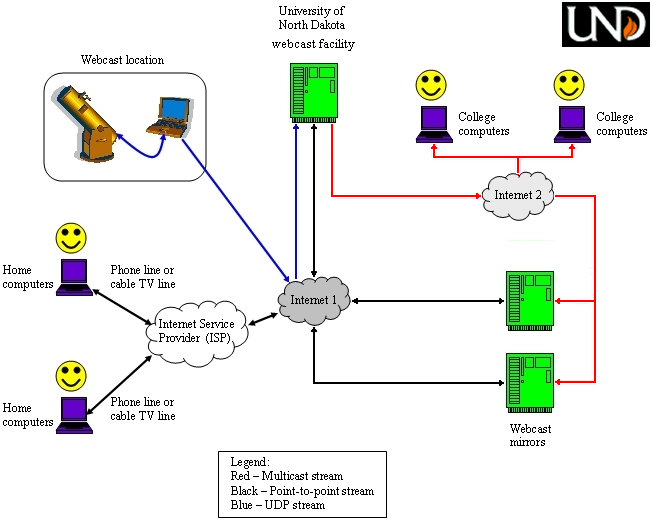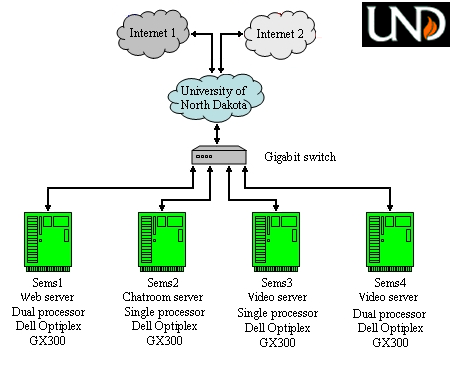|
|
ABOUT WEBCASTING:
When webcasting streaming video/audio a person only has a few options:
-
Point-to-point/HTTP webcasting (traditional webcasting) requires every viewer to have a separate (and
in our case - redundant) connection into the broadcasting computer. Therefore, this approach limits the number of
viewers possible by the bandwidth of the broadcast site.
-
Multicast webcasting requires only 1 connection to the broadcasting computer. The single stream is replicated
and re-transmitted to every outgoing connection by every router encountered. Therefore, the number of viewers possible
is the entire world! However, since the signal is now being sent to everyone (whether they want it or not)
multicasting consumes a massive amount of network bandwidth and, therefore, many ISPs (Internet Service Providers)
block all multicast signals.
By using a combination of webcast technologies (point-to-point and multicast) combined with mirror sites we have
created a hierarchical webcasting system that allows us to serve many more viewers than would be possible with any
single approach. We provide a multicast stream over Internet 2 (primarily for university viewers) and many
point-to-point streams over Internet 1 (for home viewers) via our site and mirror sites. The University of North
Dakota SEMs webcast system is depicted in Figure 1.
Figure 1. UND SEMs webcast methodology.
Since running a webcast and chatroom consume a lot of bandwidth and computing power, we have developed a webcast
facility comprising 4 computers. Sems1 is used to serve the webpages and sems2 is used for the chatroom. Sems3 and
sems4 are used to serve the video (sems3 for the point-to-point feed and sems4 for the multicast feed). The University
of North Dakota SEMs webcast facility is depicted in Figure 2.
Figure 2. UND SEMs webcast facility.
|







